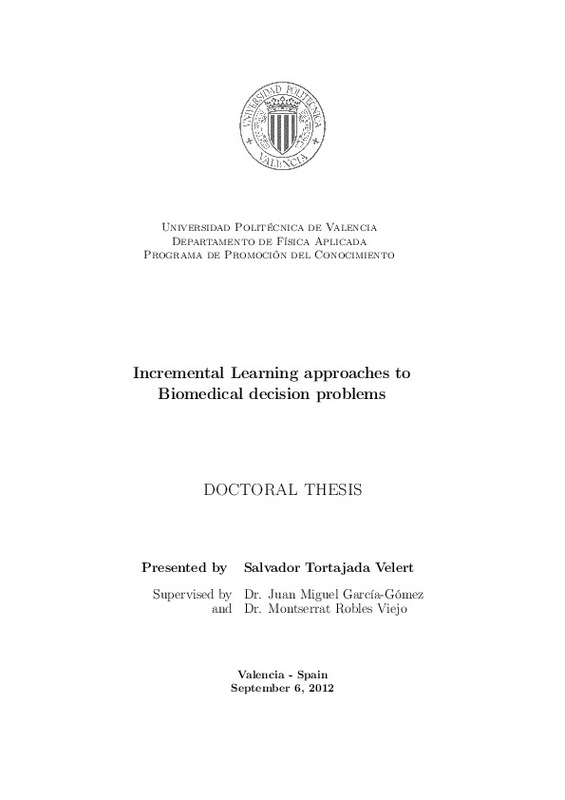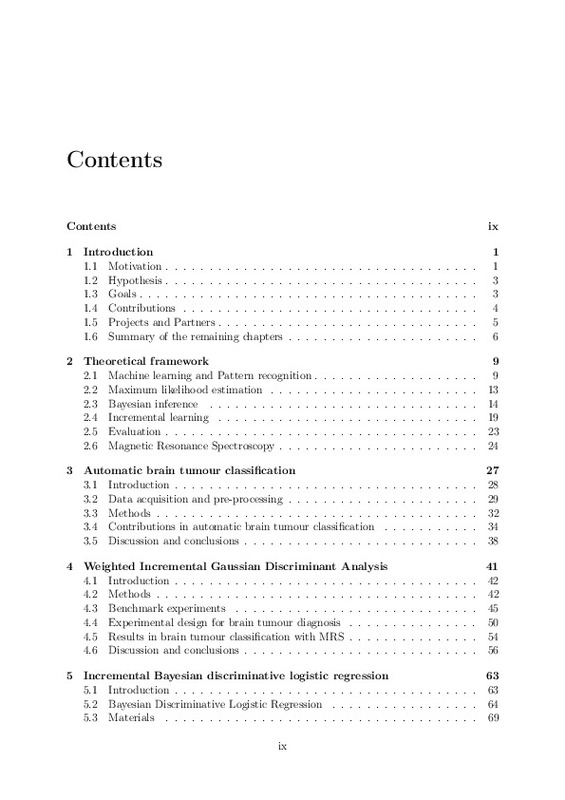- RiuNet repositorio UPV
- :
- Investigación
- :
- Tesis doctorales
- :
- Ver ítem
JavaScript is disabled for your browser. Some features of this site may not work without it.
Buscar en RiuNet
Listar
Mi cuenta
Estadísticas
Ayuda RiuNet
Admin. UPV
Incremental Learning approaches to Biomedical decision problems
Mostrar el registro completo del ítem
Tortajada Velert, S. (2012). Incremental Learning approaches to Biomedical decision problems [Tesis doctoral]. Universitat Politècnica de València. https://doi.org/10.4995/Thesis/10251/17195
Por favor, use este identificador para citar o enlazar este ítem: http://hdl.handle.net/10251/17195
Ficheros en el ítem
Metadatos del ítem
| Título: | Incremental Learning approaches to Biomedical decision problems | |||
| Autor: | Tortajada Velert, Salvador | |||
| Director(es): | ||||
| Entidad UPV: |
|
|||
| Fecha acto/lectura: |
|
|||
| Resumen: |
During the last decade, a new trend in medicine is transforming the nature of healthcare from reactive to proactive. This new paradigm is changing into a personalized medicine where the prevention, diagnosis, and treatment ...[+]
|
|||
| Palabras clave: |
|
|||
| Derechos de uso: | Reserva de todos los derechos | |||
| DOI: |
|
|||
| Editorial: |
|
|||
| Tipo: |
|
recommendations
Este ítem aparece en la(s) siguiente(s) colección(ones)
-
Tesis doctorales [5422]







![Text file [Text]](/themes/UPV/images/text.png)



